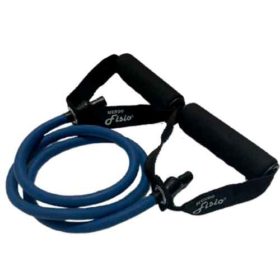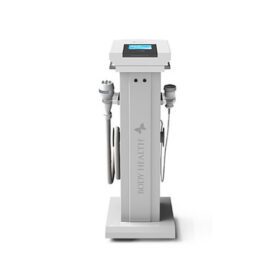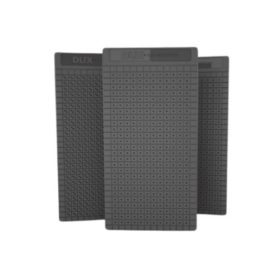Encontre o que precisa com preço baixo, pagamento facilitado no Cartão, Pix ou Bitcoin | Financie em até 48x | (62) 3999-1263 - (62) 99497-9204
The Evolution of Safety Gear in Construction and Modern Cities
Ensuring safety in construction and urban environments is a cornerstone of sustainable development. As cities grow and infrastructure projects become more complex, the importance of effective safety gear becomes increasingly evident. This article explores the historical progression, innovative materials, modern technologies, and future trends that shape safety standards worldwide, illustrating these developments with practical examples, including the modern city simulation mysweettown-onlinegame.top.
Table of Contents
- Introduction: The Significance of Safety Gear in Construction and Urban Environments
- Historical Evolution of Safety Measures in Construction
- The Role of Material Innovation in Safety Gear Development
- Modern Safety Gear Technologies and Trends
- The Impact of Urban Planning and Modern Cities on Safety Gear Standards
- Non-Obvious Perspectives: Cross-Disciplinary Influences and Future Directions
- Challenges and Opportunities in Ensuring Safety in Evolving Urban Landscapes
- Conclusion: From Ancient Building Blocks to Future Safety Innovation
1. Introduction: The Significance of Safety Gear in Construction and Urban Environments
Safety gear plays a vital role in protecting construction workers and urban populations alike. In the bustling environment of city development, hazards such as falling objects, machinery accidents, and structural failures pose ongoing risks. Proper safety equipment reduces injury rates, enhances compliance with regulations, and fosters a culture of safety. For example, modern cities like mysweettown-onlinegame.top exemplify how integrating safety standards into urban planning leads to healthier, more resilient communities.
The relationship between safety gear and city infrastructure is symbiotic. As urban landscapes evolve to include taller skyscrapers, complex transportation systems, and smart technologies, safety equipment must adapt accordingly. This continuous development aims not only to protect individual workers but also to safeguard entire populations from urban hazards, demonstrating the importance of interdisciplinary approaches in safety innovation.
2. Historical Evolution of Safety Measures in Construction
a. Early Safety Practices in Ancient Civilizations
Ancient civilizations such as Egypt, Greece, and Rome employed rudimentary safety methods. Workers used simple tools and basic protective measures, like wooden scaffolding and minimal head protection. For instance, Roman builders often used leather straps and rudimentary helmets made from bronze or leather to prevent falling debris. Although primitive, these practices reflected an understanding of the importance of safeguarding laborers amidst rapidly expanding urban projects.
b. The Development and Adoption of Protective Gear Over Centuries
The Middle Ages saw the advent of more structured protective equipment, primarily inspired by armor technology. The Industrial Revolution catalyzed formal safety standards, leading to the invention of helmets, gloves, and harnesses. Notably, the 19th century introduced the first commercially available hard hats, which significantly reduced head injuries on construction sites. These innovations built on previous knowledge, gradually establishing safety as a central component of construction practice.
c. Influences of Technological Advances on Safety Equipment Design
The 20th century marked a period of rapid technological progress, including the development of impact-resistant plastics and advanced textile fibers. These materials enhanced safety gear durability and comfort. For example, the introduction of fiberglass reinforced helmets improved impact absorption, while innovations in breathable fabrics increased worker compliance. Technological progress continually shaped safety equipment to meet the demands of increasingly complex urban projects.
3. The Role of Material Innovation in Safety Gear Development
a. Transition from Rudimentary to Advanced Protective Materials
Early safety gear relied on basic materials like leather and wood. Modern safety equipment uses advanced composites such as Kevlar, carbon fiber, and high-performance polymers. These materials offer superior impact resistance, flexibility, and lightweight properties, enabling workers to wear protective gear for extended periods without discomfort. For example, Kevlar-lined gloves provide cut resistance while maintaining dexterity.
b. How Material Science Has Improved Durability and Comfort
Innovations in textile engineering have led to breathable, moisture-wicking fabrics that improve worker compliance. Additionally, impact-resistant helmets now incorporate multi-layered foam and smart materials that absorb shocks more effectively. These advancements not only enhance safety but also reduce fatigue, enabling longer working hours in demanding environments.
c. Non-Obvious Innovations Inspired by Unrelated Fields
Interestingly, some safety gear innovations draw inspiration from fields like confectionery manufacturing. For instance, layered, flexible materials used in candy production—such as layered soft centers—have influenced the design of impact-absorbing padding in helmets and knee pads. The layered construction allows for better shock dispersion, exemplifying how cross-disciplinary insights can enhance safety technology.
4. Modern Safety Gear Technologies and Trends
a. Integration of Smart Technology: Sensors, GPS, and Real-Time Monitoring
Today’s safety gear increasingly incorporates smart sensors that monitor vital signs, detect impacts, and track location via GPS. Wearables like smart helmets can alert workers or supervisors about potential hazards instantly, reducing accidents. For instance, real-time data on fatigue levels can prompt breaks, preventing overexertion and injuries.
b. Customization and Ergonomic Improvements for Worker Compliance
Ergonomic design tailored to individual worker needs improves comfort and encourages proper use. Adjustable straps, lightweight materials, and form-fitting shapes reduce discomfort. This personalization is especially crucial in urban environments where prolonged safety gear use is common, supporting a safety-first culture.
c. The Impact of Wearable Technology on Accident Prevention
Wearable devices that provide immediate feedback or alerts have demonstrated effectiveness in accident prevention. For example, vibration alerts for proximity to dangerous machinery or fall detection sensors can activate emergency protocols rapidly, saving lives and minimizing injuries.
5. The Impact of Urban Planning and Modern Cities on Safety Gear Standards
a. How City Infrastructure Demands Influence Safety Equipment Design
As urban infrastructure becomes more complex—featuring skyscrapers, underground transit, and smart traffic systems—safety gear must evolve. For example, harness systems are now designed to accommodate higher fall risks in tall building construction, and eye protection standards have increased to shield workers from new hazards like laser-based equipment.
b. Case Study: My Sweet Town as an Illustrative Model of Modern Urban Safety Standards
In the simulated environment of mysweettown-onlinegame.top, safety protocols are integrated into city planning, emphasizing protective gear, emergency response systems, and community awareness. This model reflects real-world trends where urban safety is integral to sustainable development, demonstrating the importance of proactive safety standards.
c. The Role of Policy, Regulation, and Community Awareness
Effective policies and regulations set the minimum safety standards, while community engagement promotes a safety culture. Cities that invest in training, enforce strict equipment standards, and foster public awareness see reductions in accidents and improved quality of life.
6. Non-Obvious Perspectives: Cross-Disciplinary Influences and Future Directions
a. Lessons from Non-Construction Fields: Candy Canes and Layered Safety Gear
The origins of the candy cane—a sweet treat believed to have appeared in Germany around 1670—offer an interesting analogy. Its layered, flexible design, created for durability and visual appeal, parallels the development of layered safety gear, such as impact-absorbing padding with multiple materials. This cross-disciplinary insight highlights how principles from seemingly unrelated fields can inspire innovative safety solutions.
b. Potential Future Innovations
Emerging trends include biomimicry—designs inspired by nature such as shark skin for anti-fouling surfaces—and augmented reality (AR) overlays that assist workers in hazard identification. Sustainable materials, like biodegradable composites, are also being developed to reduce environmental impact. These advancements promise safer, smarter urban construction practices.
c. Societal Importance of Evolving Safety Gear
As urban populations grow rapidly, especially in developing regions, the societal payoff for investing in advanced safety gear becomes immense. Protecting workers not only reduces healthcare costs but also promotes economic stability and community well-being, emphasizing the need for ongoing interdisciplinary innovation.
7. Challenges and Opportunities in Ensuring Safety in Evolving Urban Landscapes
a. Balancing Technological Innovation with Cost and Accessibility
While cutting-edge safety technologies offer significant benefits, they can be costly. Ensuring affordability and broad accessibility remains a challenge, especially in low-income regions. Strategies include developing scalable solutions and fostering public-private partnerships to democratize safety innovations.
b. Addressing Human Factors: Training, Compliance, and Cultural Shifts
Technology alone cannot ensure safety; human factors such as proper training, cultural attitudes, and compliance are crucial. Cultivating a safety-first mindset through education and leadership is essential for effective implementation.
c. How My Sweet Town exemplifies proactive safety culture
The virtual city demonstrates how integrating safety into urban planning fosters community awareness, proactive policies, and technological innovation. Such models can inspire real-world cities to prioritize safety as a fundamental aspect of sustainable development.
8. Conclusion: From Ancient Building Blocks to Future Safety Innovation
The journey from primitive safety practices to sophisticated, technology-driven gear underscores the importance of continuous innovation. Lessons from history, cross-disciplinary insights, and emerging technologies collectively drive the evolution of safety gear, essential for safeguarding urban growth and community well-being. As cities expand and urban challenges intensify, interdisciplinary learning and proactive policies will remain vital to developing safer, smarter environments for all.




